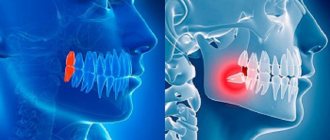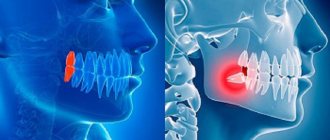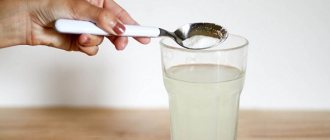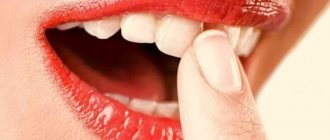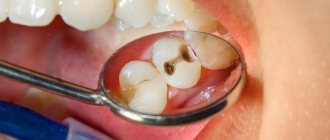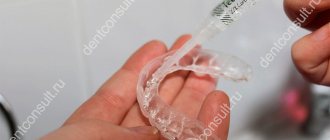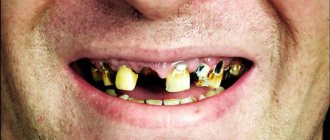The first European who decided to determine for certain the benefits and harms of salt for the oral cavity was Antonie van Leeuwenhoek. In 1674, he invented the microscope and learned that microbes lived in his mouth. After trying to clean his teeth with a cloth with salt, the researcher noticed that the bacteria had disappeared. The scientist liked the achieved effect so much that he continued to use salt until his death, which overtook Leeuwenhoek half a century later at the age of 93. Now, to determine the degree of effectiveness of this method of cleaning the oral cavity, you can use the results of modern research.
How does salt affect teeth?
Table salt, without additives or flavorings, consists of only 2 chemical elements: sodium and chlorine. Saline solution is one of the classic folk remedies for toothache, which has a number of advantages over other analgesics:
- Absolutely natural product. It does not contain components that can cause poisoning, allergic reactions or other side effects.
- One of the most effective antiseptics. It quickly eliminates bad breath, destroys microorganisms that provoke caries and decay processes. Can be used instead of mouth rinses.
- Natural bleach. It restores the natural light color of the enamel, further mineralizing it, strengthening the gums and accelerating tissue regeneration processes.
- Cheap product. It is easy to buy in any store without fear of counterfeits.
If you use sea salt for hygiene procedures, the effect will be even better due to the mineral impurities contained in the composition: magnesium, calcium, potassium, fluorine, bromine and more.
On the other hand, there is a common myth that if you brush your teeth with salt, the enamel will gradually become thinner due to the abrasive effect of using the powder. This is wrong. There is a Mohs scale that is used to determine the hardness of various substances in nature. For comparison:
| Material | Mohs scale scores |
| Rock salt | 2,5 |
| Calcium carbonate (chalk) | 3 |
| Tooth enamel, glass | 5 |
| Steel | 6 |
| Diamond | 10 |
Calcium carbonate is an ingredient in many toothpastes that helps clean plaque from teeth. It is harder than salt, but still cannot scratch enamel, just as glass cannot cut a diamond. Therefore, there is no need to worry that when using traditional methods, your teeth will quickly deteriorate. You just need to figure out how to use them correctly.
Combined with soda
To do this, mix the ingredients in equal quantities. Then wet the brush, dip it into the mixture and brush your teeth as usual, without pressing hard on the surface.
Step 1
Step 2
Step 3
Step 4
Large grains can be placed under the tongue and wait until it dissolves. At the same time, saliva will begin to be intensively produced. After complete dissolution, take a brush and brush your teeth.
How to brush your teeth with salt
When you first try to brush your teeth with salt, 2 temporary effects may appear: sensitivity will increase and your gums will begin to bleed. This is not so much the harm from the product as the consequences of errors:
- Choosing coarse salt. Large crystals will damage your gums. It is best to choose a product of category 1, not extra fine dust.
- Availability of additives. In recent years, the number of brands of salt with flavors and dyes has been constantly increasing on the market. Their use is not recommended: it is expensive and increases the risk of side effects.
- Strong pressure when cleaning. Hard bristles injure the gums, causing bleeding and discomfort. For hygiene procedures, it is better to choose a brush with soft bristles, and the first time, use your fingers thoroughly washed with soap.
According to reviews, it is recommended to alternate brushing your teeth with salt and using regular toothpaste. The folk method can be used 2-3 times a week to achieve the desired effect. There are 3 recipes for using salt.
Classic method
To use it, just have salt and a glass of warm water on hand. The procedure will also not take much time:
- Fill half a glass of table salt with water and stir for a minute.
- Remove the formed foam.
- Scoop out half a teaspoon of salt every day and brush your teeth in the morning and evening.
The product has no expiration date and can be stored at room temperature. Saline solution can also be used as a rinse after each meal.
Sivananda paste
Salt was used in Tibet hundreds of years before Anthony van Leeuwenhoek decided to test whether it could be used to clean teeth. Considering that many components of traditional yogic paste can be difficult to find, V.V. Vostokov, a KGB officer and author of the legendary “Resident Mistake,” used an adapted but no less effective recipe:
- Mix a few drops of olive oil with a pinch of fine sea salt. You can use additives: a little ash from eggplant peel or ground pine needles.
- Rub the mixture into the gums and teeth for 2-3 minutes with the middle and index fingers towards the tip of the tooth. If there is bleeding, perform the massage in the opposite direction.
- Rinse your mouth with warm water.
Instead of olive oil, you can buy sesame, amaranth, coconut and any other. The main thing is that it is of plant origin and produced using cold-pressed technology, which preserves the maximum of active substances.
In addition to fingers, you can use chewed shoots of rowan, pear, viburnum, linden, or stalks of carrots and celery. The effectiveness of such sticks has been proven by scientists, who confirmed that they clean teeth better than conventional brushes.
Lazy method
Considering the effectiveness of using salt, it would be strange not to find it in ready-made toothpastes. They are unlikely to be found on the shelves. But you can order online so as not to waste time making the mixture yourself and certainly stop worrying about the salt scratching the enamel. Among the highest quality pastes without harmful synthetic additives are:
- Weleda Salt Toothpaste. Due to the high content of the main ingredient, it has an unforgettable, very salty taste, which not everyone will like. The product's ingredients also include jojoba oil, gum, horse chestnut and peppermint.
- Radius. It is certified by the USDA and consistently ranks first in rankings for the best organic toothpastes. Contains coconut and tea tree oil, rosemary, orange and grapefruit extracts, baking soda.
- Redmond Earthpaste. The main component of this paste is red clay, mined near Redmond in the USA. Lemon, lime and tangerine extracts are also added to it.
These are quite expensive, but high-quality products that have been on the market for decades. But they are not the only ones, so you can find cheaper analogues to suit your taste.
Classic application
Sea salt is better suited for this recipe, as it is rich in iodine. But you can use cookware. In any case, select fine salt, otherwise you will have to additionally crush it in a coffee grinder.
Cleaning scheme No. 1:
- wash your hands with soap;
- sprinkle salt on your fingers;
- Gently rub the surfaces on all sides.
Cleaning scheme No. 2:
- put a little salt on your tongue;
- wipe teeth from the outside and inside;
- rinse your mouth.
During the first procedures, painful sensations will appear. But after 3-4 cleanings they will go away.
Consumer Reviews
Valentina, 43 years old, St. Petersburg
“I use a mixture of salt and olive oil on a regular basis. My teeth actually began to hurt much less, and bleeding disappeared. But after a week the enamel began to turn yellow. It turned out that the oil was a tinted fake. As soon as I changed it, the problem disappeared and my teeth began to whiten again.”
Andrey, 54 years old, Sevastopol
“I don’t like testing traditional methods on myself. I prefer to use proven products when ordering salt pastes. The taste, of course, is specific, and they are applied to a dry brush so as not to dilute the composition with water. But you get used to it. But you don’t have to go to the dentist.”
Nina, 29 years old, Krasnodar
“I don’t know what is supposed to harm the teeth, but I tested the method from my own experience. For the past 2 years I have been simply collecting salt and brushing it every day. I have never achieved such a feeling of freshness in my mouth with any paste. In addition, salt perfectly helped cure periodontal disease, with which I had been suffering for a very long time.”
Folk recipes
Cleansing is carried out not only with pure grains or in combination with soda. Try the following recipes:
- Essential oil. Add 1 drop of orange or mint oil and 1-2 g of salt (a pinch) to the brush. This paste will further strengthen the gums.
- Mix. Grind the banana peel in a blender, add 1 drop each of pine needle and olive oil + 3-4 g of salt. This paste will disinfect the oral cavity and strengthen the roots.
- Refreshing. Grind 4-5 eucalyptus leaves, add 1 drop of olive oil and 2 grams of salt. The product will rid your teeth of plaque and hard deposits.
- Clay. You can use any type of clay (white, green, blue). It is rich in various useful components, so it will help remove plaque and strengthen the gums. To make a medicinal paste, you will need to mix 0.5 tsp. salt, 1 tsp. clay, 2 drops of orange essential oil, 0.5 tsp. honey. Soak a brush in the mixture and brush your teeth.
- Crushed red pepper. Thanks to the medicinal paste, blood circulation is enhanced and periodontal disease is prevented. To prepare the cleansing mixture you will need 3 g of pepper and 1 tsp. salt. You need to clean the oral cavity with a brush dipped in the mixed medicinal mixture.
Follow the recommendations, and then you will get rid of plaque, improve the condition of your oral cavity and achieve a lightening of 1-3 tones.
Reviews from doctors
Mishchenko Natalya Viktorovna, dentist
“I do not recommend using traditional methods, and salt in particular, to any of my patients. People often come to me after such experiments to begin adequate treatment. If your teeth hurt and caries has started, just visit your dentist. If you want to whiten your teeth and get rid of plaque, you need to come to the clinic and quickly solve these problems using modern methods. And if you really want to conduct an experiment, then it is better to consult with a specialist in advance, so that later you do not have to remove teeth that could still be saved.”
How strong will the whitening effect be?
The question of whether it is possible to brush your teeth with soda and salt for whitening has always been very relevant. In one of the previous sections of the article, we noted that these products can actually lighten the enamel slightly, mainly by effectively removing soft bacterial deposits and contaminants. However, you shouldn't expect more from them.
Even if you start cleaning on an ongoing basis, you won’t be able to achieve more than 1-2 tones of lightening. And remember, the more effort you make, the worse the effect will be - the enamel may fade and lose its natural shine, the process of demineralization will begin, many cracks and roughness will appear on it.
Things to consider
Teeth whitening at home involves clarifying contraindications. Similar procedures are allowed for people who have reached the age of eighteen: it is at this time that the active formation of the dental system ends. For children, such a procedure is not recommended in principle, because their tooth enamel is thin and fragile. If it darkens, it suggests poor hygiene or illness.
The desire to have an attractive smile is considered the main indication for teeth whitening, but before purchasing and using home whitening products, it is recommended to visit a dentist. He will examine the teeth, assess their condition, give advice on which remedy to use, or warn that such procedures will only do harm.
Even mild bleaching has contraindications. These include:
- abrasion of a pathological nature;
- caries;
- gum disease, exposed tooth roots;
- numerous fillings;
- tooth sensitivity, tendency to allergenic manifestations.
The whitening procedure is prohibited for people wearing braces, pregnant women and mothers during lactation, and people with allergies.
Contraindications and possible harm
When used correctly, salt does not harm healthy teeth during brushing. But if you have dental problems or a careless approach to personal hygiene, the powder can cause harm.
When using salt to clean the mouth, it is prohibited:
- use food powder on a daily basis for a long time;
- apply strong pressure to the teeth and gums while brushing;
- spend too much time on the procedure.
When diluted with water, finely ground salt becomes quite soft, but still retains its abrasive properties. If you rub it with excessive force, you can damage the enamel or injure the gums and mucous membranes.
Attention! When starting to clean your mouth with salt, you need to carefully listen to your feelings. If after several procedures the condition of the teeth worsens, it is better to abandon the product.
How to maintain the results of cleaning and improve the health of your enamel
For 2-5 days after brushing your teeth with home remedies, avoid eating hot, too cold, sour and spicy foods - this will help minimize the discomfort that may arise due to increased sensitivity of the enamel.
For several days after the procedure, you should not eat or drink “colored” foods and drinks if you do not want the enamel to quickly darken again. Remember that after exposure to such products, it becomes porous and especially susceptible to pigments. For the same purpose, you should give up smoking for a while, or at least try to reduce the habit to a minimum.
Before and after the procedure, it is recommended to strengthen the enamel using pastes with fluoride and calcium, as well as by eating foods rich in these elements.


